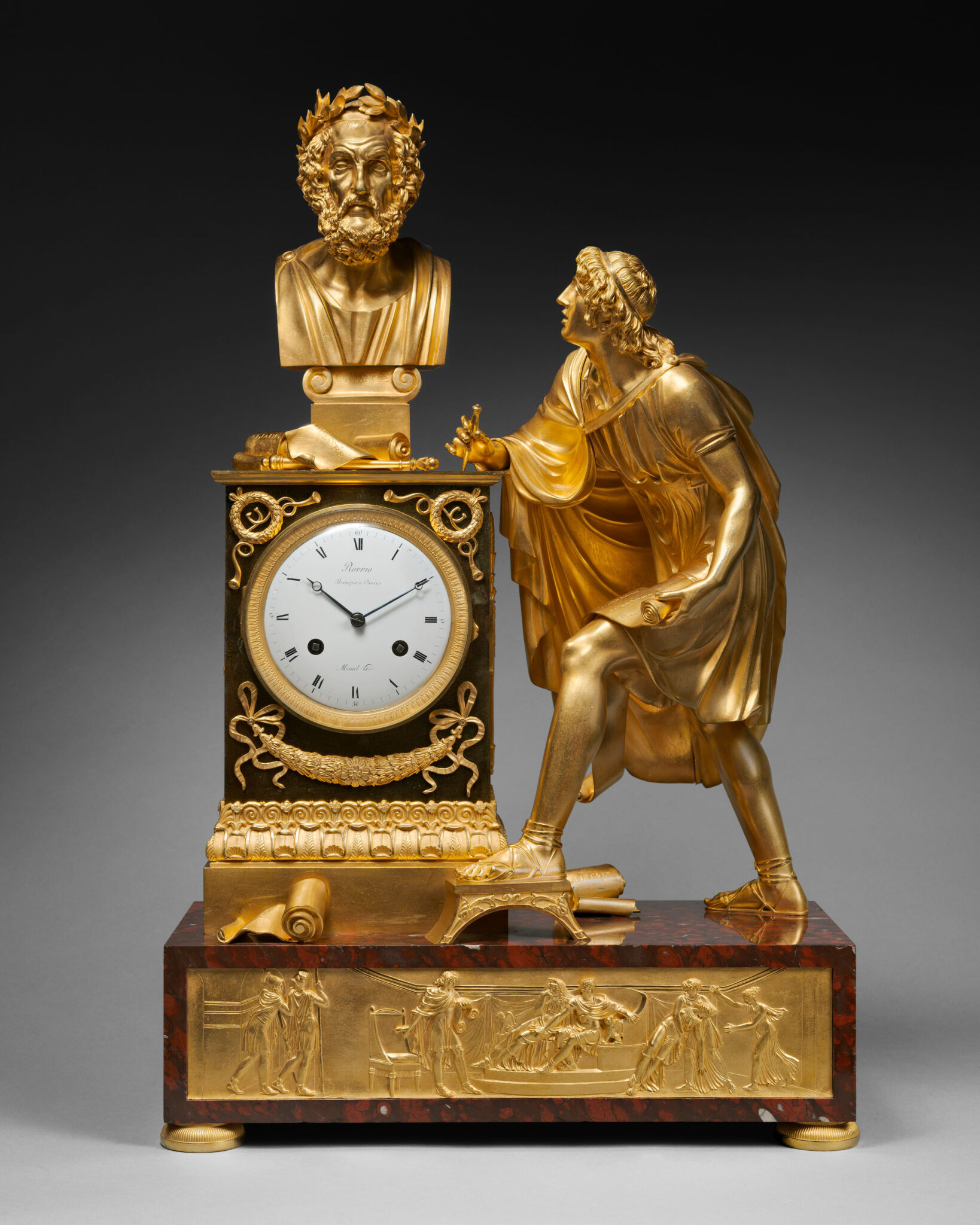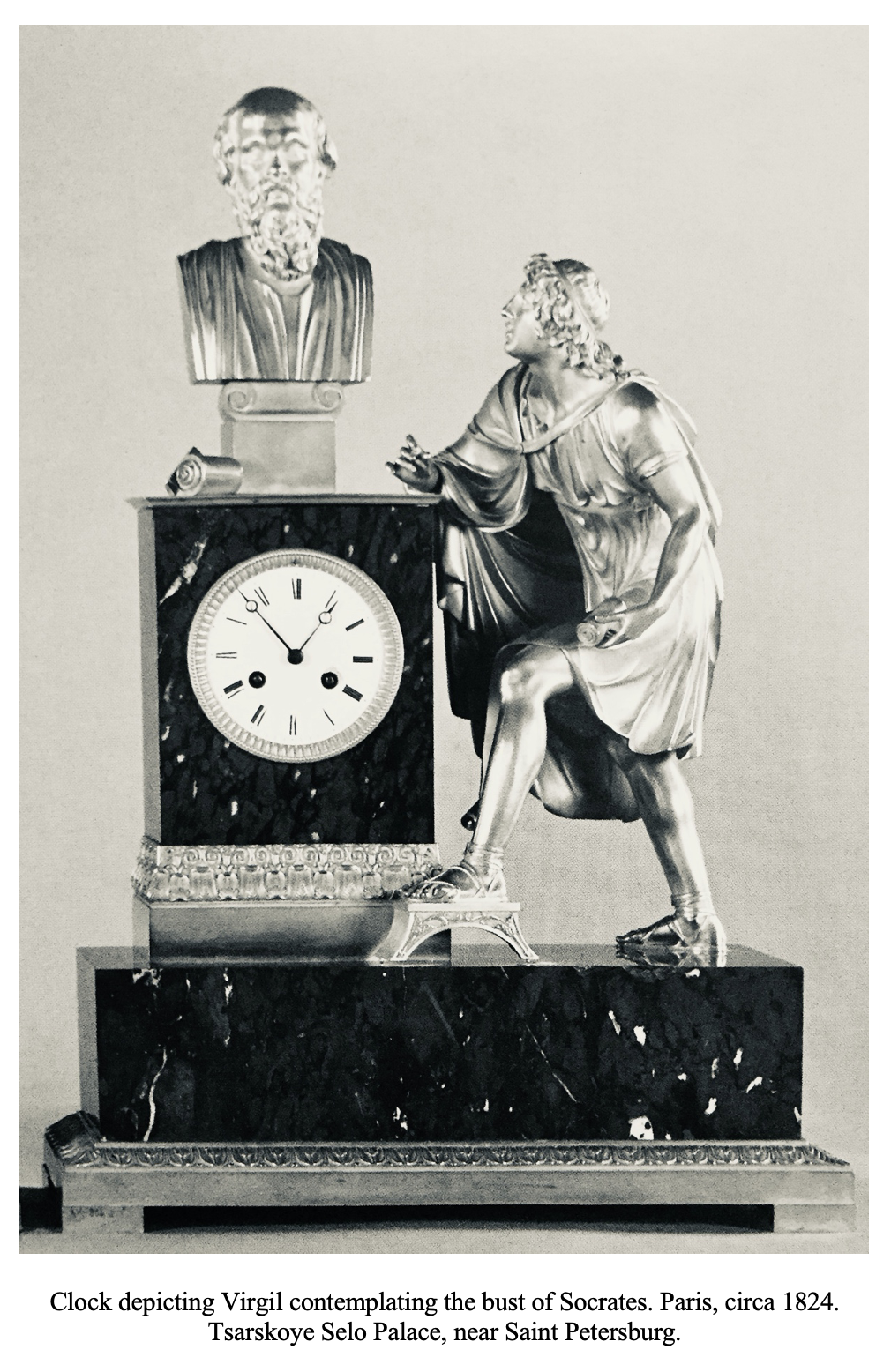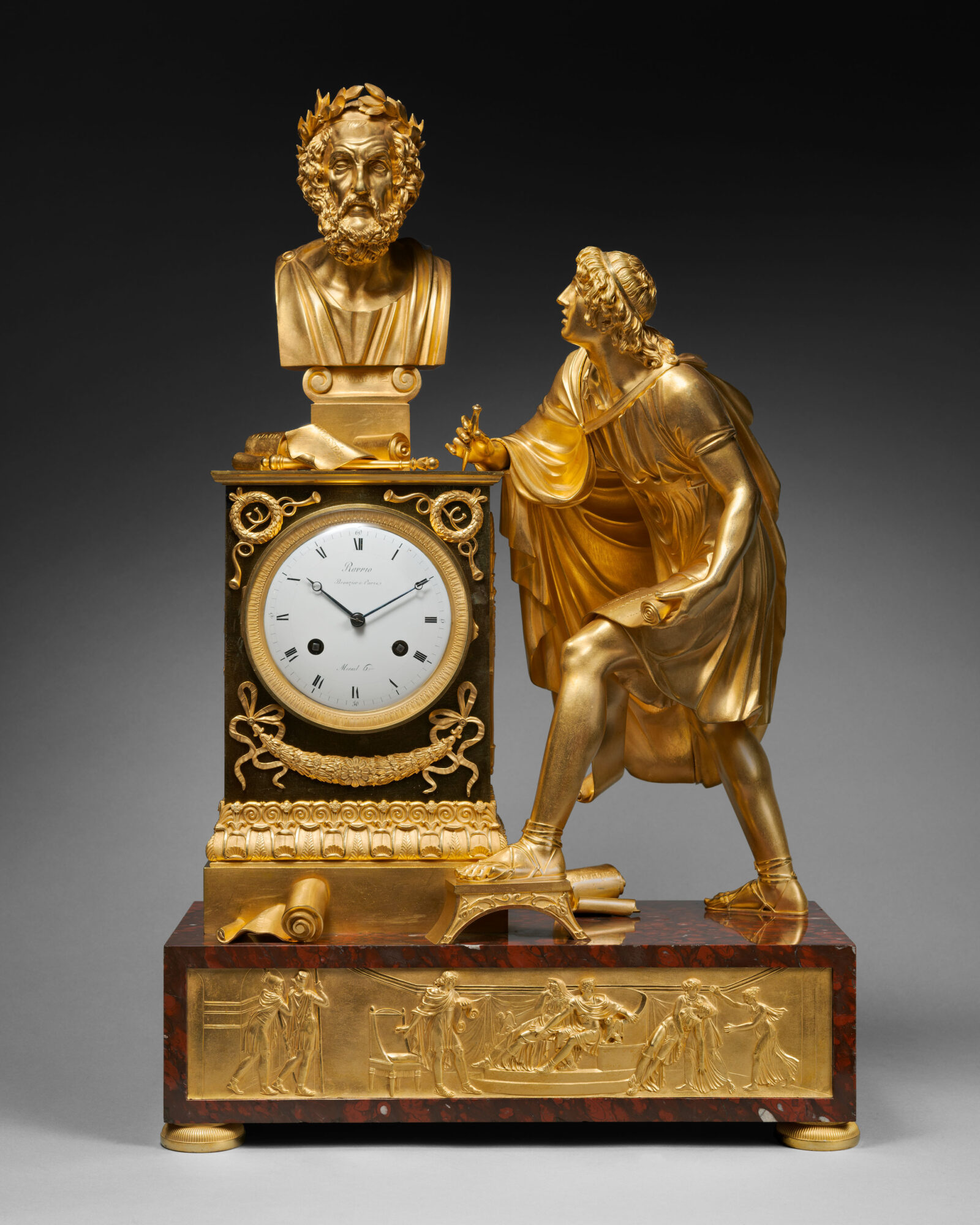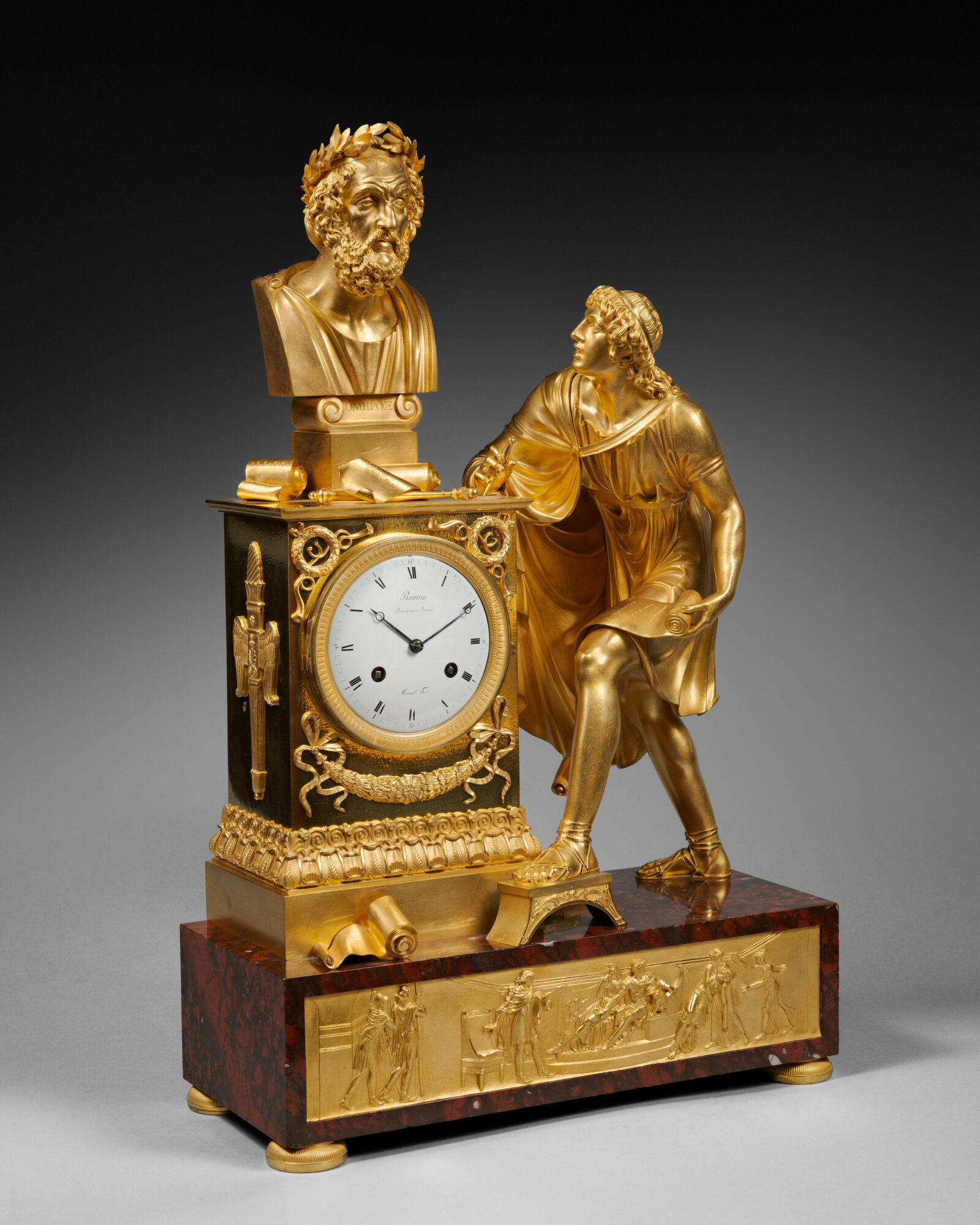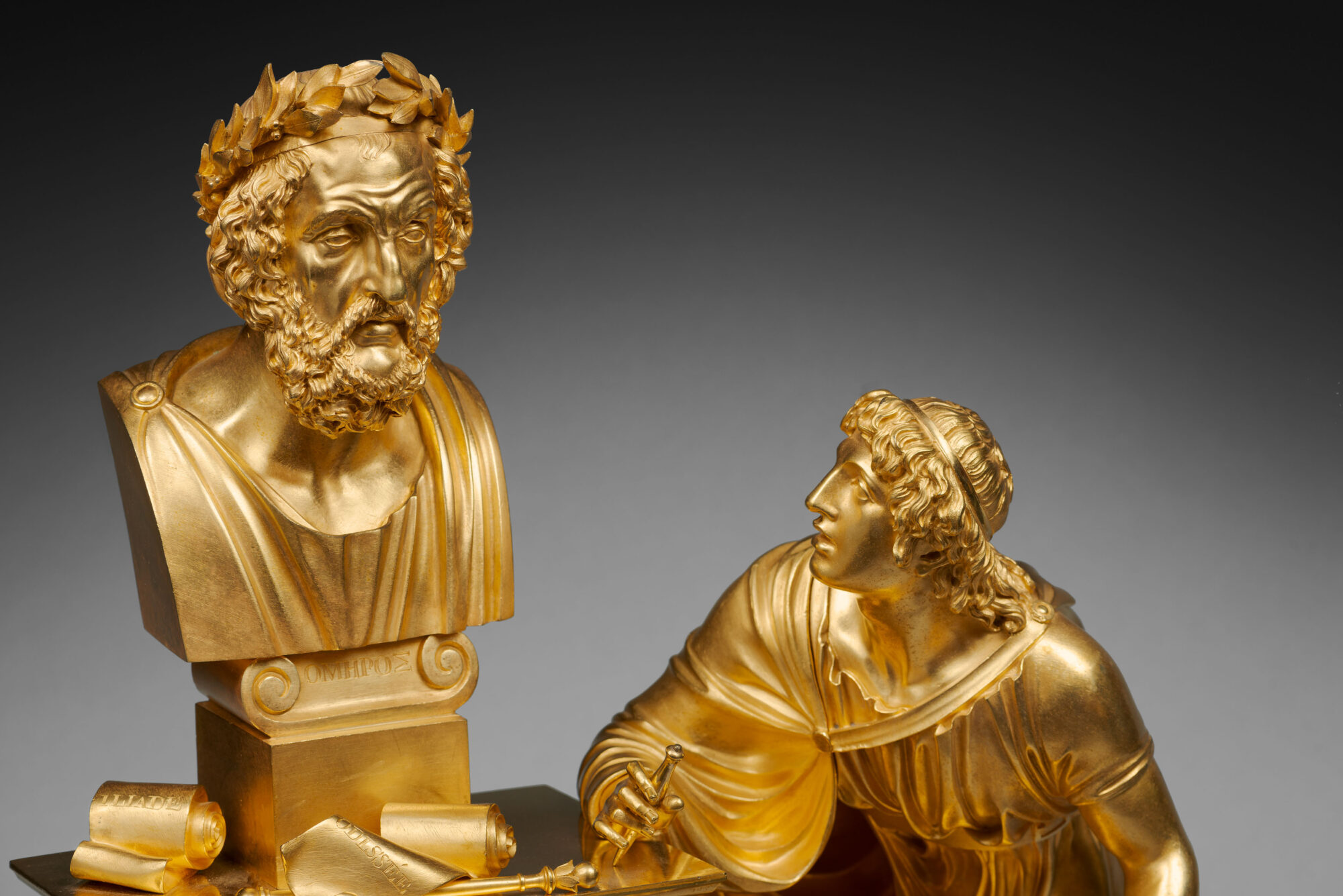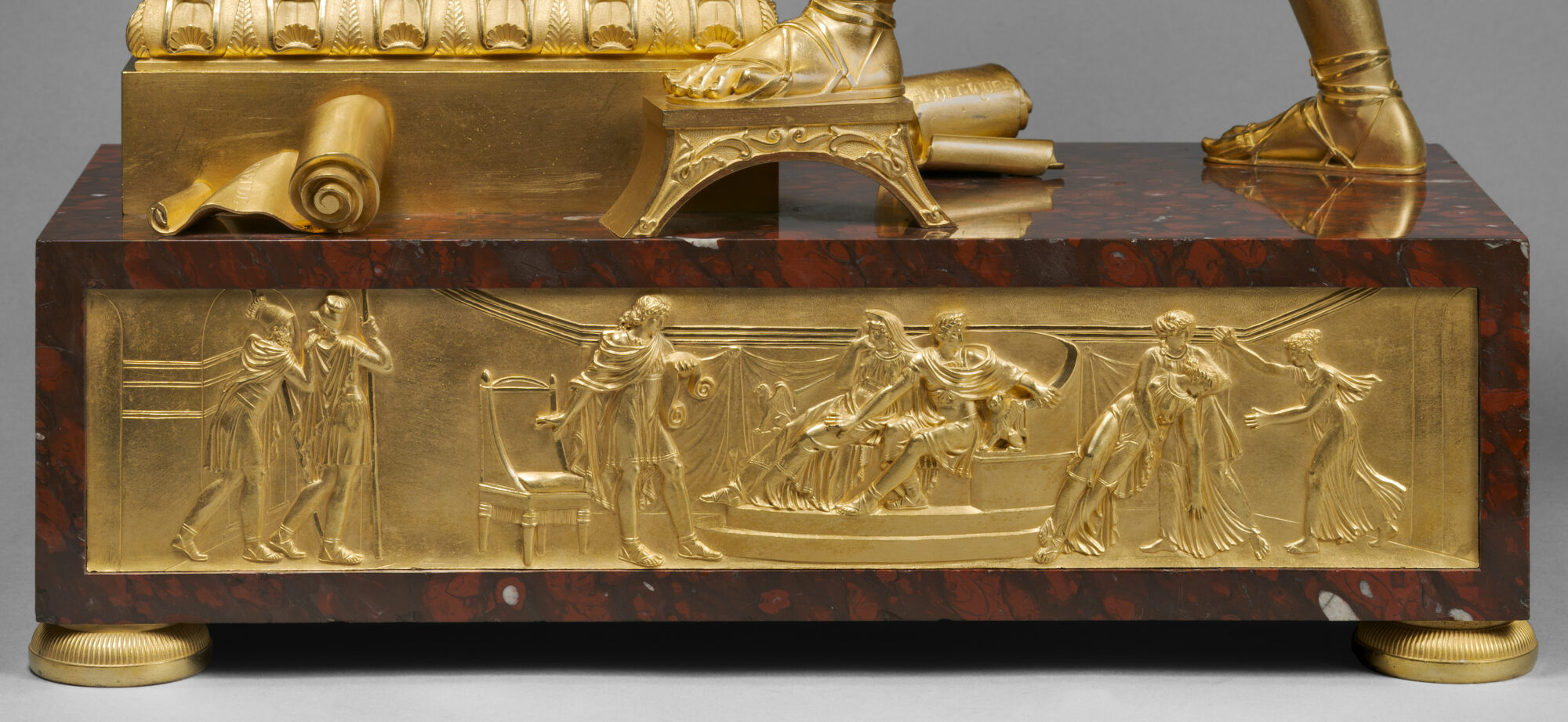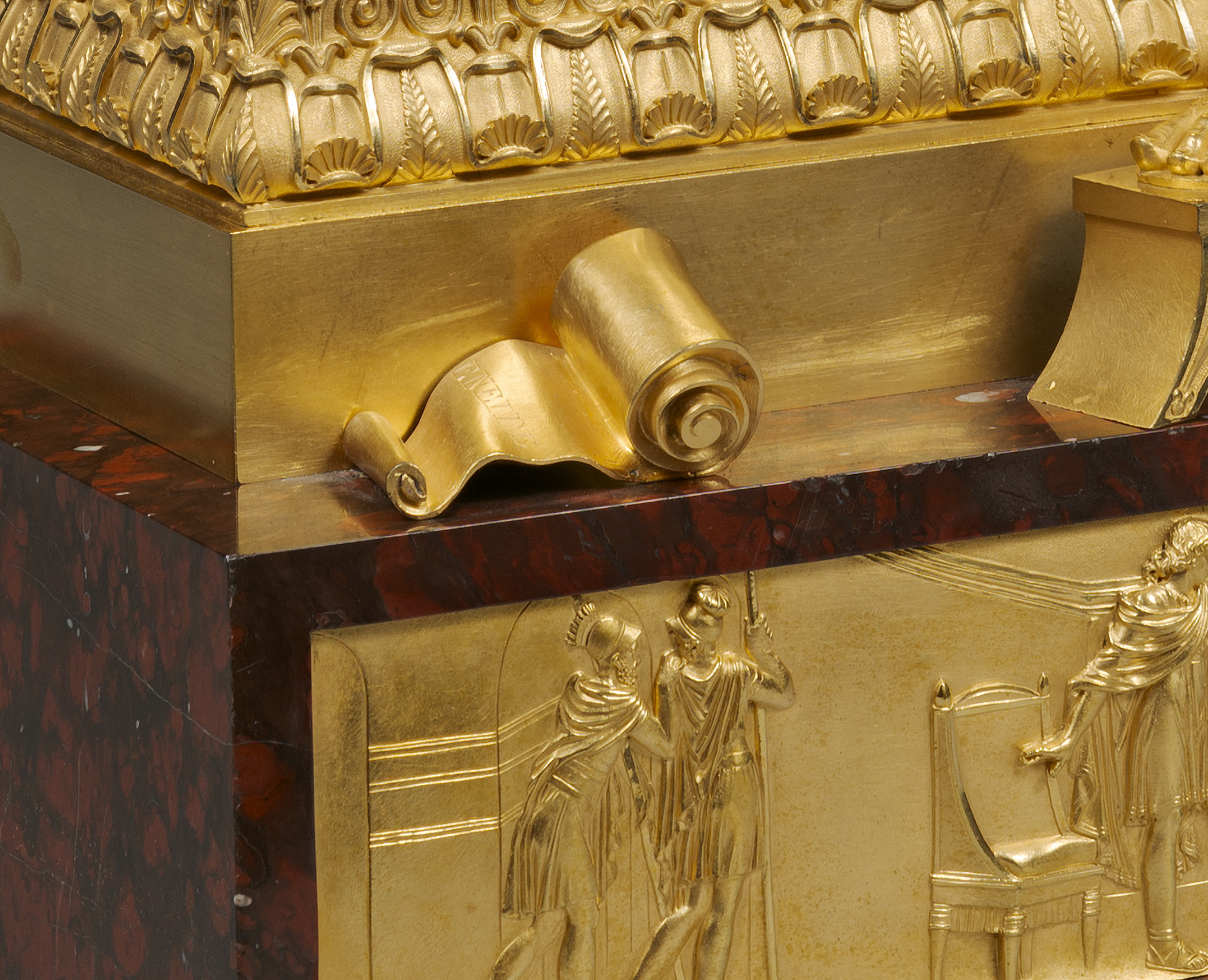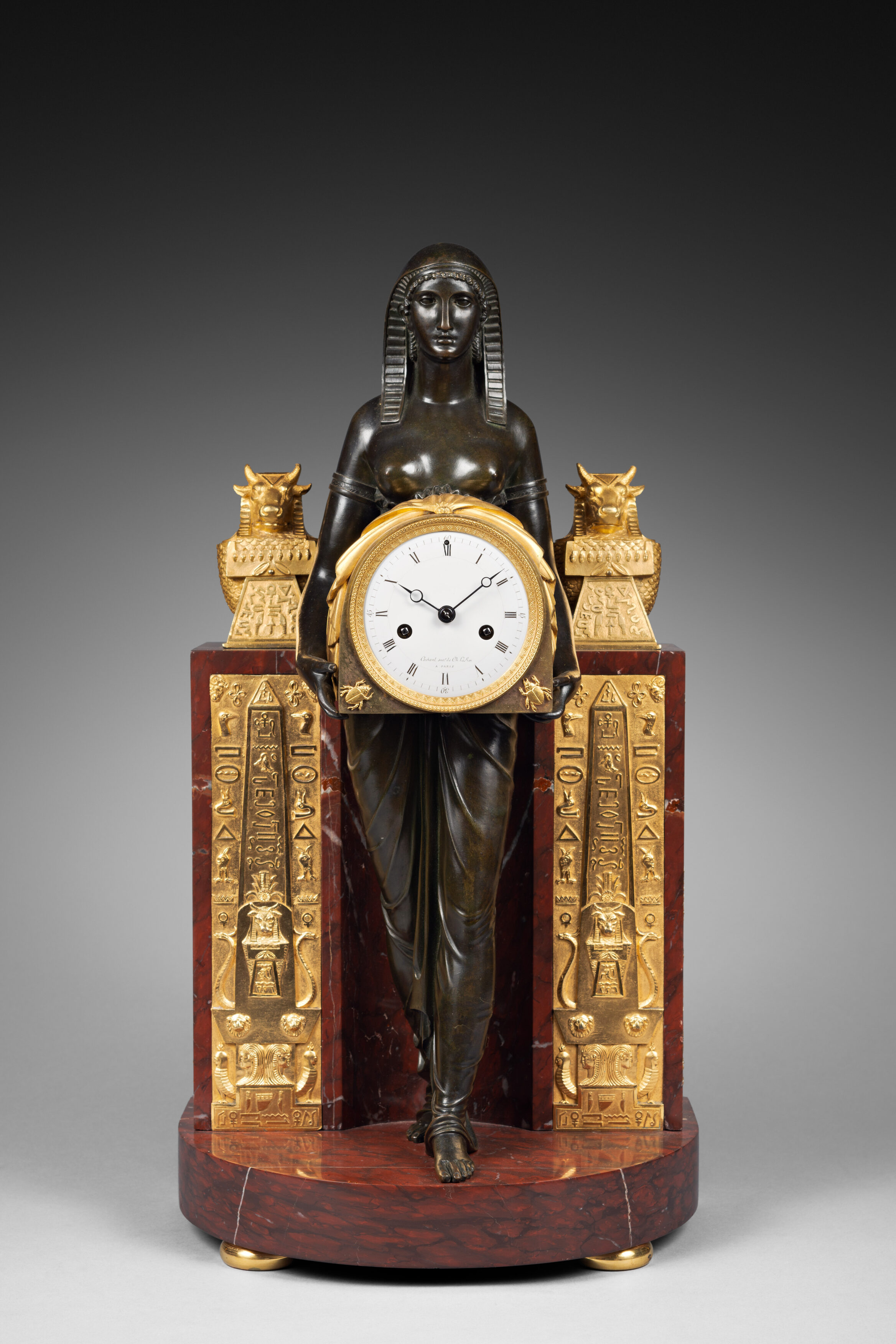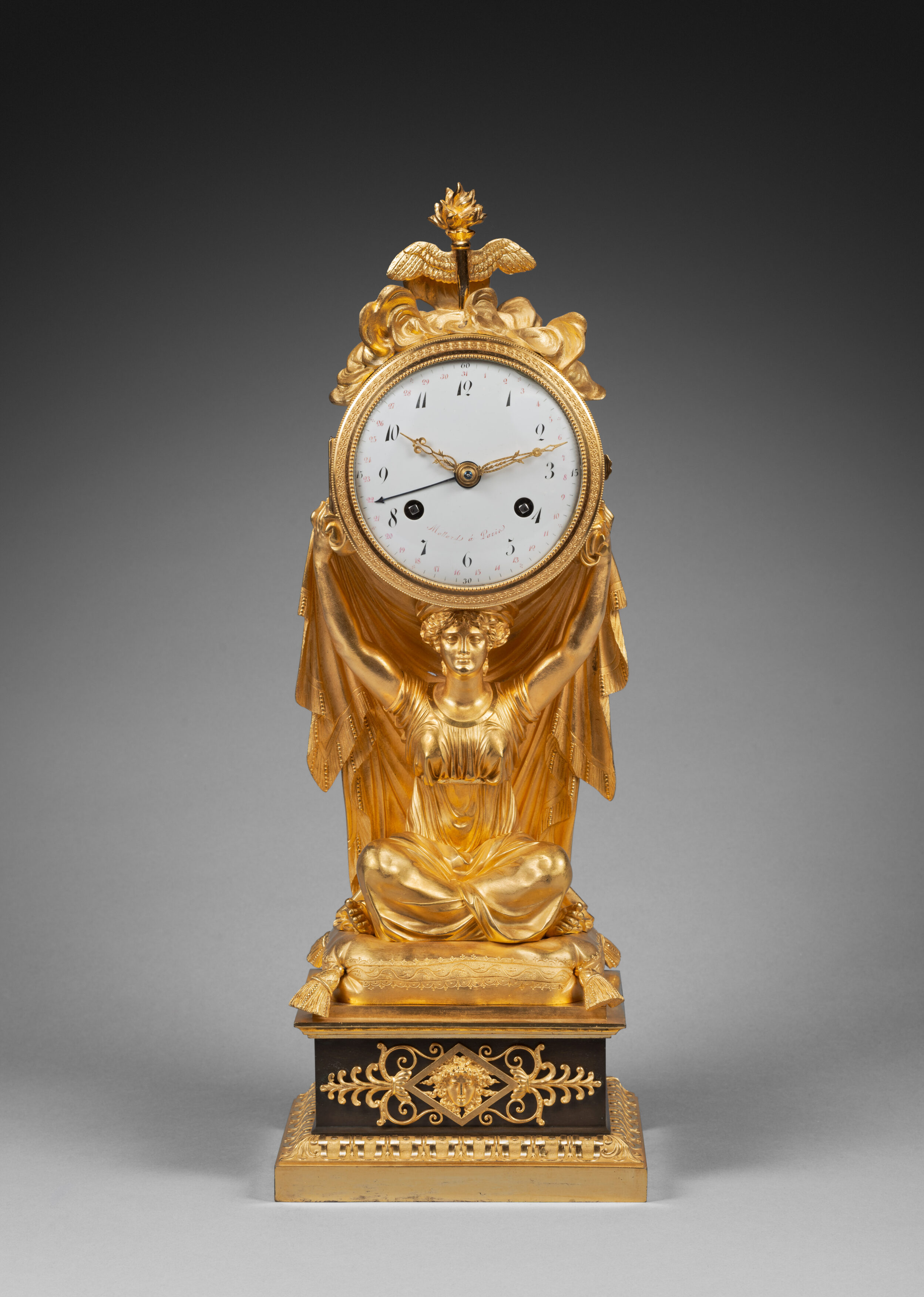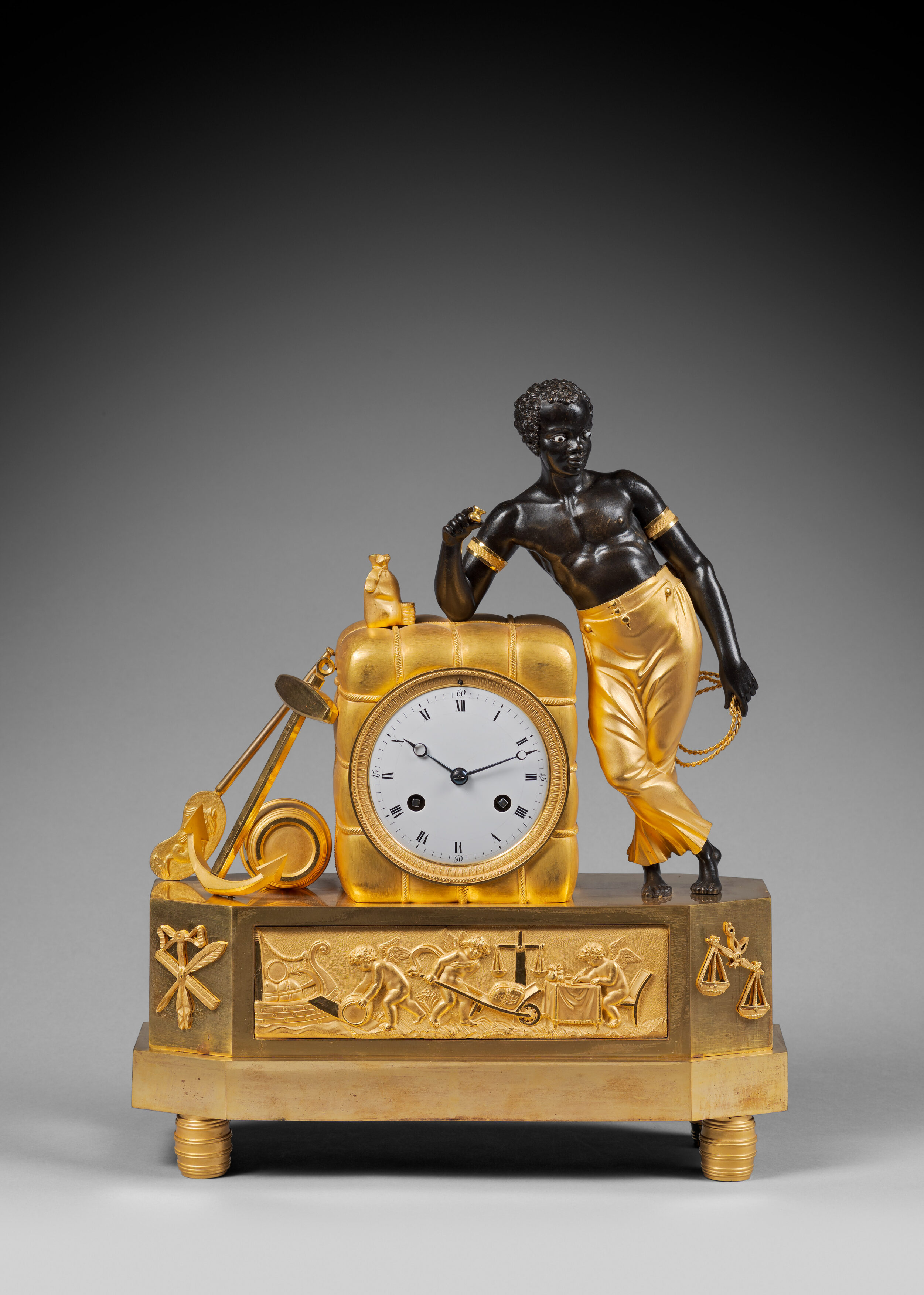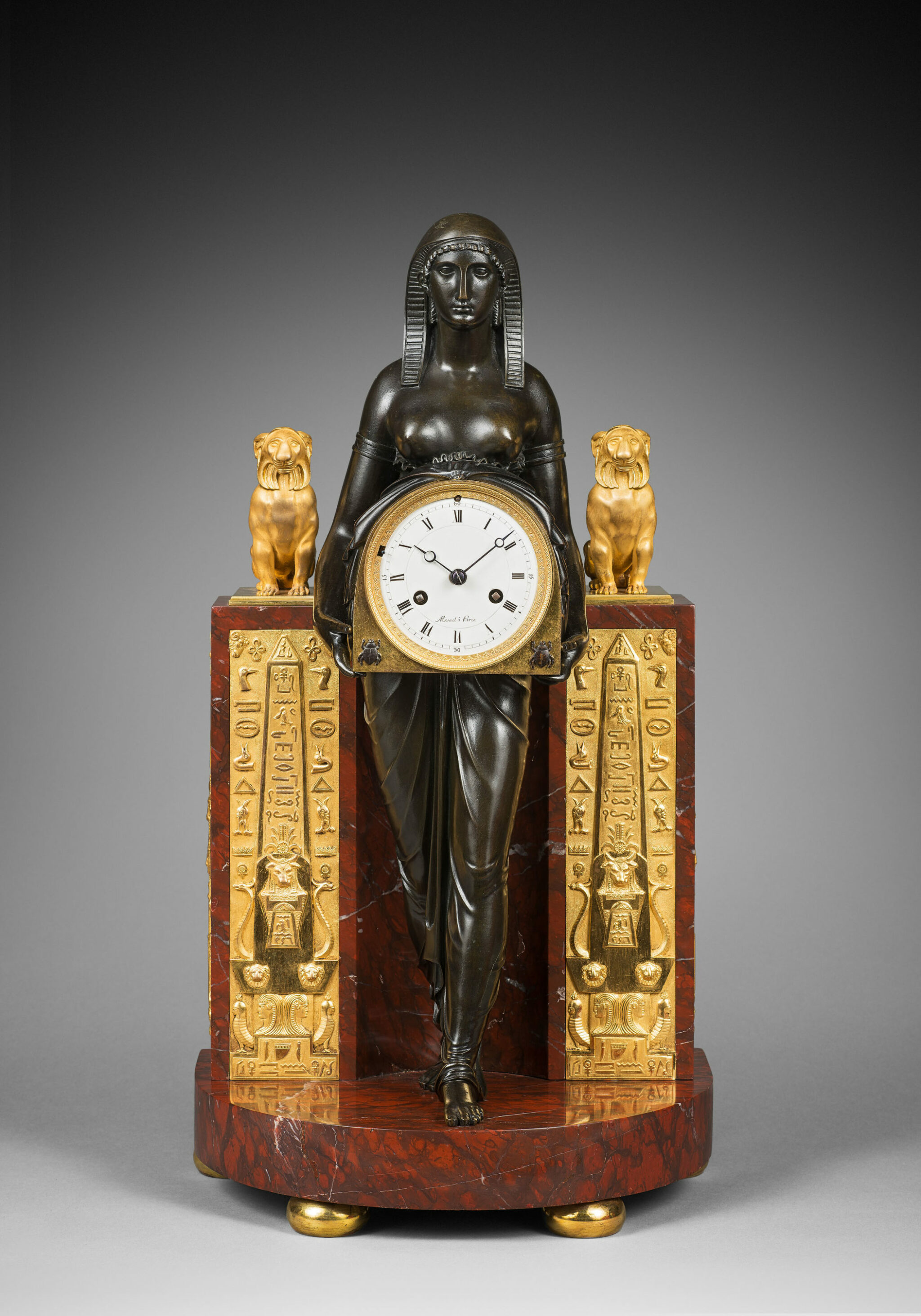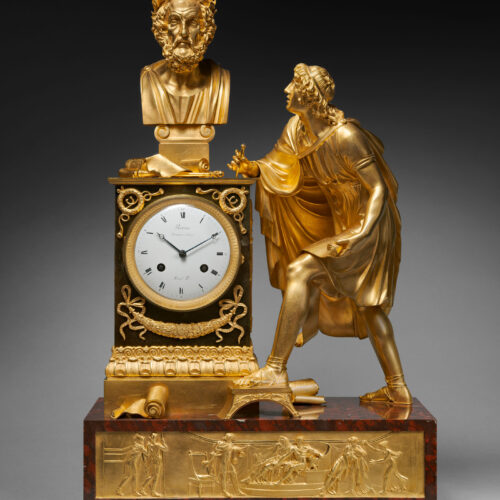A Rare Red Griotte Marble and Gilt Bronze Mantel Clock with Matte and Burnished Finishing
“The Aeneid”
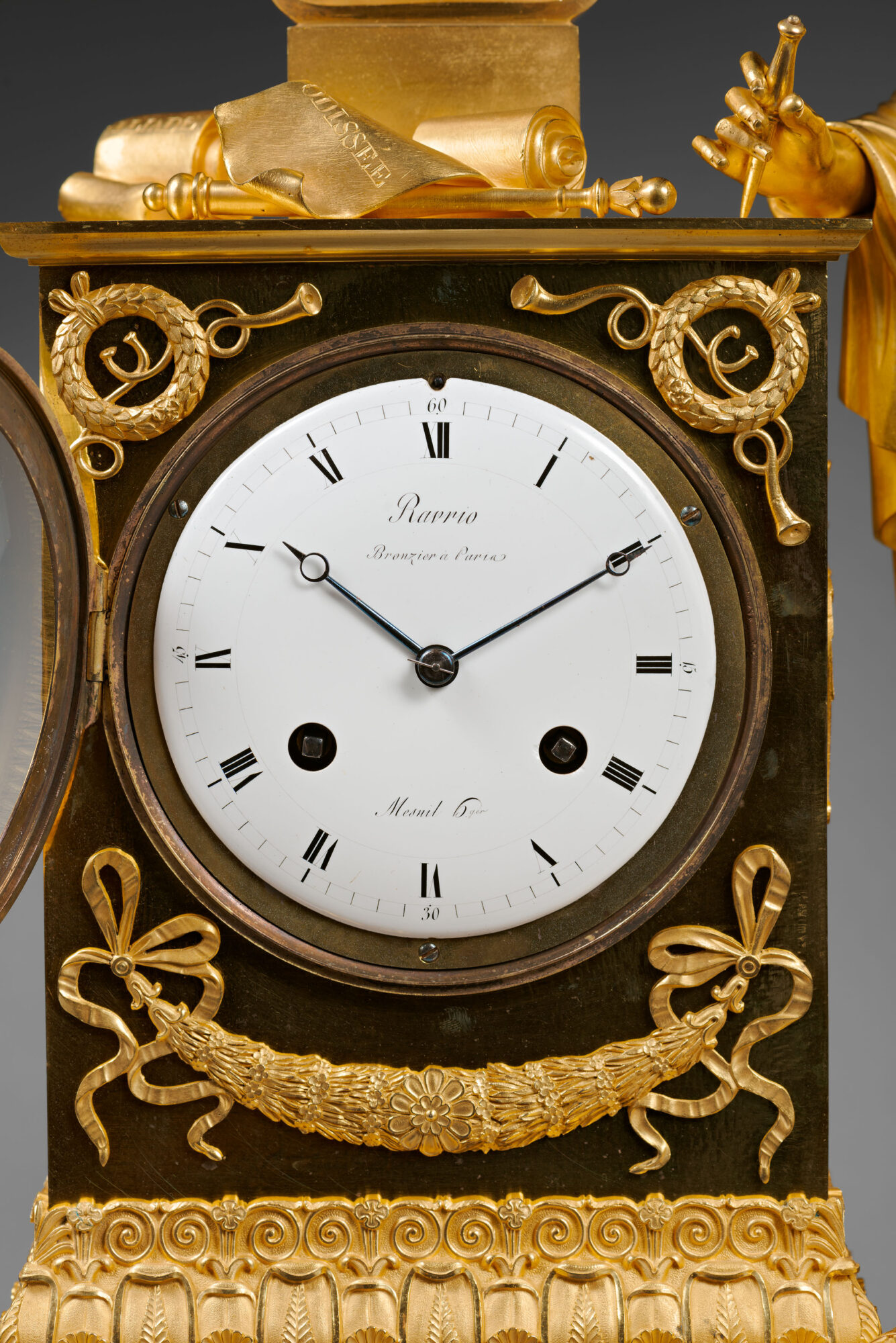
Dial signed « Mesnil horloger » by the clockmaker
Case made by André-Antoine Ravrio (1759-1814)
Paris, Empire period, circa 1805
The round white enamel dial, signed “Ravrio Bronzier à Paris/Mesnil Hger”, indicates the Roman numeral hours and the Arabic numeral minutes by means of two blued steel Breguet hands. The neoclassical case features a figure from classical antiquity that is made of finely chased patinated and gilt bronze with matte and burnished finishing, and red griotte marble. The hour and half-hour striking movement is housed in a rectangular case adorned with winged quivers, ribbon-tied flower and leaf swags, and crossed trumpets. The lower portion of the case is decorated with a wide frieze of alternating stylized leaves and palmettes, and motifs of scrolling stems and flowers. On the pedestal there is the magnificent bust of a bearded man wearing a laurel wreath and classical robes. He represents Homer, whose name is engraved on the pedestal bearing two scrolls; on the terrace there is a scepter, symbol of the poet’s eternal glory, and two partially rolled parchments on which appear the words “Iliad” and “Odyssey”, Homer’s two poems concerning the Trojan War. Leaning against the case to the right of the viewer is a man wearing a toga who contemplates the poet’s bust. He is holding a stylus and an unrolled parchment on his left thigh; his foot rests on a small footstool that is decorated with scrolls against a matted ground, two scrolls at his feet bear the titles “Aeneid” and “Georgics”; they relate to the figure, who represents the celebrated Roman poet Virgil, The façade of the quadrangular red griotte marble base is adorned with a low relief scene depicting Virgil reading the Aeneid before Augustus and Livia; in the background, there is Octavia, the sister of Augustus. She faints upon hearing the verses in which the poet speaks of her son, Marcellus. The clock is raised upon four knurled and flattened feet.
Discover our entire collection of rare antique clocks and antique mantel clocks for sale online or at the gallery.
The theme of this remarkable mantle clock is an homage to classical poetry, here represented by Homer and Virgil, two of the most important poets of antiquity.
Among the rare identical clocks known today (though with certain variations) are three large models in which a female figure is on the left of the composition: the first is in the Château de Fontainebleau (inventory n° F4076); it is illustrated in H. Ottomeyer and P. Pröschel, Vergoldete Bronzen, Die Bronzearbeiten des Spätbarock und Klassizismus, 1986, Tome I, p. 352, fig. 5.8.2. The second appears in the inventory of the Mobilier National in Paris (inventory n° GML-10486-000) (see M-F. Dupuy-Baylet, Pendules du Mobilier National 1800-1870, Éditions Faton, Dijon, 2006, p. 64-65). The third and final example is in the Copenhagen Kunstindustrimuseet (illustrated in Tardy, La pendule française, 2ème Partie: du Louis XVI à nos jours, Paris, 1974, p. 370). A later clock, of the same dimensions as the present example though much less elaborate, and surprisingly paired with a second clock that features the female figure appearing on the large version, in which the bust of Homer is replaced by that of Socrates, is in the Tsarskoye Selo Museum near Saint Petersburg (inventory n° ЕД-364-IV; ЕД-365-IV) (illustrated in Tatiana V. Serpinskaya, Fine Art Bronze in the Collections of Tsarskoye Selo, Aurora Art Publishers, Saint Petersburg, 2009, p.152-153).
The mention “Mesnil” is evidently the signature of one of the members of the Dugrandmesnil or Dumesnil family, a dynasty of Parisian clockmakers that seems to have shortened its name during the Revolution to avoid any confusion with the aristocracy. The name Mesnil appears on many dials alongside that of Ravrio; the two regularly worked together during the Empire period. Many of these clocks were owned by important contemporary collectors; several were briefly described in the probate inventories of General Joseph-Félix Lazowski, Marquis Germain Garnier, Emmanuel-Marie-Louis, Marquis de Noailles, the French ambassador in Vienna, Louis-Alexandre Berthier, Prince of Wagram, and Napoleonic Marshal Michel Ney, Prince de la Moskowa.
André-Antoine Ravrio (1759 - 1814)
Made master bronzier in 1777, he is one of the most important Parisian bronze workers of the late 18th century and the early Empire period. Supplier of bronzes to the Imperial Garde-meuble, Ravrio helped furnish Napoleon’s residences, along with Thomire and Galle; he also worked for some of the most influential figures of the time, including Marshals of the Empire. Today certain of his works are in the collections of the Mobilier national in Paris.
